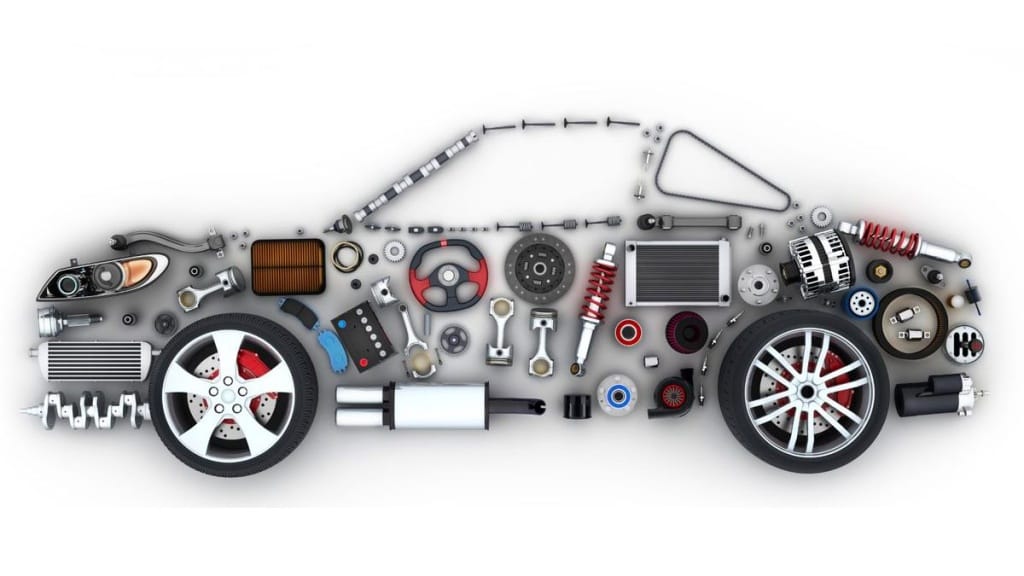How to Change a Tire: Your Ultimate Step-by-Step Guide
A flat tire can happen to anyone, anywhere. One moment you’re cruising down the road, and the next, you hear that dreaded thump-thump-thump. It’s a situation that can feel stressful, but it doesn’t have to ruin your day. Learning how to change a tire is a fundamental skill for any driver. It empowers you to handle the unexpected, saving you time, money, and the anxiety of being stranded. This guide is designed to walk you through the entire process, from getting your car prepped safely to getting back on the road. We’ll cover everything you need to know in simple, easy-to-follow steps.
Think of this as your friendly roadside companion. We’ll break down the tools you need, the safety precautions to take, and the exact sequence for swapping out that flat. By the end, you’ll have the confidence to tackle this common car problem head-on.
Key Takeaways
- Safety First: Always pull over to a flat, level surface away from traffic. Turn on your hazard lights and engage the parking brake before you begin.
- Gather Your Tools: You’ll need a spare tire, a lug wrench, and a jack. These usually come with your vehicle. Wheel chocks and gloves are also highly recommended.
- Loosen Before You Lift: Break the lug nuts loose before jacking up the car. It’s much harder and less safe to do so when the wheel is in the air.
- Proper Jack Placement: Place the jack on the vehicle’s frame at the manufacturer-specified lift point to avoid damaging your car.
- Tighten in a Star Pattern: When putting the new wheel on, tighten the lug nuts in a star or crisscross pattern to ensure the wheel is seated evenly.
- Follow-Up is Crucial: After changing to a spare, check the tire pressure. If it’s a temporary “donut” spare, drive slowly and get to a tire shop as soon as possible. Have the lug nuts professionally torqued and your flat tire repaired or replaced.
Essential Safety Preparations Before You Begin
Before you even think about grabbing a tool, your number one priority is safety. A flat tire is an inconvenience; a roadside accident is a tragedy. The first step in learning how to change a tire is learning how to secure your vehicle and yourself. As soon as you realize you have a flat, slow down and look for a safe place to pull over. An ideal spot is a wide shoulder, an empty parking lot, or a quiet side street. The ground should be as flat and solid as possible. Avoid stopping on soft ground, mud, or a steep incline, as this can cause the jack to become unstable and fail.
Once you’ve found a suitable spot, put your car in park (or in gear for a manual transmission) and engage the parking brake. This is a critical step to prevent the car from rolling. Next, turn on your hazard lights (flashers). This makes your vehicle much more visible to other drivers, especially at night or in poor weather. If you have reflective triangles or flares in your emergency kit, place them 50-100 feet behind your vehicle to give oncoming traffic ample warning. Always be aware of your surroundings and stay as far away from moving traffic as you can.
Gathering the Necessary Tools for the Job
You can’t change a tire without the right equipment. Fortunately, most cars come with a basic kit for this exact purpose. Before you find yourself in a real roadside situation, it’s a great idea to locate these tools in your vehicle. They are typically stored in the trunk, under the floor mat, or in a compartment on the side. Sometimes, in trucks or SUVs, they are located under or behind the back seat.
Here’s what you should have:
- Spare Tire: This could be a full-size spare or a smaller, temporary “donut” tire. Make sure it’s properly inflated.
- Jack: This is the tool used to lift your vehicle off the ground. There are several types, but the most common is a scissor jack, which you operate by turning a crank.
- Lug Wrench: This is a wrench with sockets on the end designed to fit the lug nuts on your wheels. Some are L-shaped, while others are a 4-way or cross-shaped wrench, which can provide better leverage.
In addition to the standard kit, some optional but highly recommended items can make the job easier and safer:
- Wheel Chocks: These are small blocks you place in front of and behind a tire to prevent the car from rolling. A brick or a sturdy piece of wood can work in a pinch.
- Gloves: A sturdy pair of work gloves will keep your hands clean and protect them from scrapes.
- Flashlight: Essential if you’re changing a tire at night. A headlamp is even better as it keeps your hands free.
- Tire Pressure Gauge: To check the pressure of your spare tire.
Locating Your Tools and Spare Tire
Finding your tools for the first time on the side of a busy highway is not ideal. Take a few minutes on a calm day to locate everything. In most sedans, you can lift the trunk floor panel to find the spare tire nestled inside a wheel well, with the jack and lug wrench tucked beside or inside it. For many SUVs, minivans, and trucks, the spare tire might be mounted underneath the rear of the vehicle. You’ll typically find a special tool in your kit to lower it. Check your owner’s manual—it will show you the exact location of the spare and all the tools, as well as provide specific instructions on how to change a tire for your model. Pro tip: Periodically check the air pressure in your spare tire. A flat spare is of no use to you!
Step-by-Step Guide to Changing a Tire on the Roadside
With your vehicle secured and your tools at hand, you’re ready to begin. The process can seem intimidating, but if you follow these steps in order, you’ll find it’s quite manageable. We will break down every part of the process, from loosening the lug nuts to lowering the car safely. This detailed walkthrough on how to change a tire will give you the confidence to handle the task.
Step 1: Prepare the Wheel
If your wheel has a hubcap or wheel cover, you’ll need to remove it first to access the lug nuts. Some hubcaps can be pulled off by hand, but most require a little persuasion. You can often use the flat end of your lug wrench or a flathead screwdriver to gently pry it off. Be careful not to scratch your wheel. Once the hubcap is off, place it on the ground.
Next, place your wheel chocks. If you’re changing a rear tire, place the chocks in front of and behind one of the front tires. If you’re changing a front tire, chock a rear tire. This is an extra layer of security to ensure your car doesn’t roll while it’s lifted. Caution: Never rely solely on the transmission or parking brake; always use chocks.
Step 2: Loosen the Lug Nuts
This is a step where many people go wrong. You must loosen the lug nuts before you lift the car with the jack. If you wait until the wheel is in the air, the wheel will just spin as you try to turn the wrench, and you won’t be able to get the nuts loose.
Place the lug wrench securely onto one of the lug nuts. Apply downward pressure in a counter-clockwise direction to loosen it (remember: righty-tighty, lefty-loosey). Lug nuts can be very tight, so you may need to use your body weight. If they are particularly stubborn, you can try positioning the wrench so it’s horizontal and carefully pressing down on it with your foot. Don’t remove the lug nuts completely yet! Just break them loose with about a half-turn to a full turn. Do this for all the lug nuts.
How to Safely Use a Car Jack
The car jack does the heavy lifting, but it’s also the most dangerous part of the process if used incorrectly. A car can weigh two tons or more, and a falling vehicle can cause serious injury. Understanding how to change a tire safely means understanding your jack.
Finding the Correct Jack Point
Your vehicle has specific points on its frame that are reinforced to handle the load of being lifted. Placing the jack anywhere else can damage the body of your car or, worse, create an unstable lift point. Your owner’s manual is your best friend here. It will have a diagram showing exactly where to place the jack.
Typically, these points are located on the pinch weld, a metal flange that runs along the underside of the car, just behind the front wheels and in front of the rear wheels. You’ll often see a small notch or a pair of notches indicating the correct placement. Caution: Never place the jack under the plastic side skirts, the engine oil pan, or the transmission. These are not designed to support the vehicle’s weight.
Raising and Lowering the Vehicle
Once you’ve positioned the jack correctly, you can begin to raise it. For a scissor jack, insert the crank rod and turn it clockwise. Raise the jack until it’s snug against the frame, then double-check that it’s properly aligned and sitting flat on the ground. Continue to raise the vehicle until the flat tire is about 3 to 6 inches off the ground. This gives you enough clearance to remove the flat and put on the fully inflated spare, which will be slightly larger in diameter.
Once the new tire is on and the lug nuts are hand-tight, you will slowly lower the vehicle by turning the jack handle counter-clockwise. Don’t let the car drop suddenly. A smooth, controlled descent is key. Lower it until the tire is resting on the ground but the full weight of the car is not yet on it. You will do the final tightening of the lug nuts in the next step.
Removing the Flat and Mounting the Spare
With the vehicle safely in the air, you can now finish what you started with the lug nuts. Unscrew them the rest of the way by hand. It’s a good idea to place them in a hubcap or a pocket so you don’t lose any. Once all the lug nuts are off, grip the tire on both sides and pull it straight toward you. It might be a little stuck due to rust or corrosion. If it is, you can give it a firm hit on the sidewall with the palm of your hand or a kick with the bottom of your shoe to dislodge it. Lay the flat tire on the ground and out of the way.
Now, grab your spare tire. Line up the holes on the spare with the lug bolts on the wheel hub and slide it on. This can be a bit awkward, as the spare can be heavy. It can help to sit on the ground and use your feet to help guide it into place. Push the wheel on until it sits flush against the hub.
The Art of Tightening Lug Nuts: Torque and Star Pattern
Properly tightening your lug nuts is crucial for safety. If they are too loose, the wheel could wobble or even come off while you’re driving. If they are too tight, you can damage the lug bolts or warp the brake rotor. The process of learning how to change a tire isn’t complete without mastering this step.
Why the Star Pattern is Non-Negotiable
You should never tighten lug nuts in a circle. Doing so can cause the wheel to seat unevenly, leading to dangerous vibrations. Instead, you must use a star pattern (or crisscross pattern). This ensures the wheel is pulled evenly against the hub.
Start by putting all the lug nuts back on and tightening them by hand as far as they will go. Then, use your lug wrench to snug them up slightly. Pick one lug nut and tighten it. Then, move to the one most directly across from it. Next, tighten the one next to your starting nut, and then move across from that one. Continue this pattern until all nuts are snug.
Final Torque on the Ground
After lowering the vehicle so the tire is on the ground but not bearing the full weight, you will do your final tightening. Again, using the star pattern, give each lug nut a final, firm pull with the wrench. You want them to be tight, but you don’t need to be a superhero. Use steady, firm pressure. Once all nuts are tight, lower the car completely and remove the jack. It’s a good practice to give the lug nuts one last check for tightness once the car is fully on the ground. Professional mechanics use a torque wrench to tighten lug nuts to the manufacturer’s exact specification. While you may not have one on the roadside, it is highly recommended that you visit a tire shop soon after to have them torqued correctly.
|
Safety Step / Tool |
Purpose & Best Practice |
|---|---|
|
Hazard Lights |
Increases visibility to other drivers. Turn them on immediately. |
|
Parking Brake |
Prevents the car from rolling. Engage fully before starting. |
|
Wheel Chocks |
Provides a physical block against rolling. Use on the opposite corner. |
|
Jack Placement |
Lifts the vehicle. Must be placed on the reinforced frame point only. |
|
Lug Wrench |
Loosens/tightens lug nuts. Use a star pattern for even tightening. |
|
Torque Wrench |
(Post-change) Ensures lug nuts are tightened to spec. Visit a mechanic. |
Temporary Spares vs. Full-Size Spares
Not all spare tires are created equal. It’s important to know what kind you have, as it dictates how you should drive after the change. The two main types are temporary “donut” spares and full-size spares. A temporary spare is much smaller and lighter than your regular tires. It’s designed for short-term, emergency use only. You should not drive faster than 50 mph (80 km/h) on a donut, and you should not drive for more than 50-70 miles. The goal is to get you to the nearest tire shop, not to continue on a long road trip.
A full-size spare, on the other hand, is a regular tire that matches the other three on your car. If you have a full-size spare, you can essentially drive normally after changing it. However, it’s still a good idea to get your original tire repaired or replaced and put back on, moving the spare back to its storage spot. Having a full rotation of matching tires is important for performance and wear, a topic often explored on automotive resources like the one found at https://versaillesblog.com/. Regardless of the type of spare, it’s wise to check its pressure as soon as you can.
Tire Pressure (TPMS) and Post-Change Checks
Modern vehicles are equipped with a Tire Pressure Monitoring System (TPMS). This system uses sensors to track the air pressure in your tires and will illuminate a warning light on your dashboard if one is low. When you put on a spare tire, especially a donut, it likely does not have a TPMS sensor in it. This means the warning light will probably stay on even if the spare is properly inflated. Don’t be alarmed by this; it’s normal. The light will turn off once you have your regular tire repaired and reinstalled.
After you have completed the change and are back on the road, your first stop should be a gas station with an air compressor. Use a tire pressure gauge to check the pressure in the spare. The correct pressure is usually printed on the sidewall of the spare itself or on the sticker inside your driver’s side door jamb. Inflate it to the proper level. Driving on an under-inflated spare is dangerous and can cause it to fail. Taking a few minutes for this check is a vital part of the how to change a tire process.
Common Mistakes to Avoid When Changing a Tire
While the process is straightforward, there are common pitfalls that can make the job harder or more dangerous. Being aware of these can help you avoid them. One of the most frequent errors is forgetting to loosen the lug nuts before jacking up the car. As mentioned, this makes the task nearly impossible. Another is improper jack placement. This can lead to serious damage to your car or a catastrophic jack failure. Always consult your owner’s manual.
Another mistake is not tightening the lug nuts enough, or tightening them in the wrong order. A loose wheel is a major safety hazard. Always use the star pattern and give them a final check on the ground. Finally, people often forget about their spare tire until they need it, only to find it’s flat or in poor condition. Make a habit of checking your spare’s pressure every few months and when you get your oil changed. A little bit of prevention goes a long way.
When Is It Better to Call for Roadside Assistance?
Knowing how to change a tire is a great skill, but there are times when it’s safer or smarter to call for professional help. If you get a flat on a busy highway with a narrow shoulder, it may be too dangerous to attempt the change yourself. Your safety is more important than a quick fix. Similarly, if you are physically unable to perform the steps—loosening tight lug nuts and lifting a heavy wheel requires some strength—it’s best to call for assistance.
Other situations include extreme weather like a heavy downpour or blizzard, which can make the job miserable and unsafe. If you find that your tools are missing or your spare tire is also flat, you will have no choice but to call for help. Most car insurance policies offer roadside assistance as an affordable add-on, and services like AAA are invaluable. There is no shame in calling for backup when the situation warrants it. Knowing your limits is part of being a smart driver.
Frequently Asked Questions (FAQ)
Q1: How tight should lug nuts be?
A: They should be very snug. On the roadside, use the lug wrench and firm pressure until you can’t easily turn it anymore. It is highly recommended to have a mechanic check them with a torque wrench to the manufacturer’s specifications as soon as possible.
Q2: How fast and how far can I drive on a donut spare?
A: Most temporary spares have limitations printed on the sidewall, but a general rule is no faster than 50 mph and for no more than 50-70 miles. It’s strictly for getting you to a safe location or a tire shop.
Q3: What if my lug nuts are too tight to loosen?
A: This is a common problem. Make sure you are turning the wrench counter-clockwise. You can try using a 4-way lug wrench for better leverage or carefully using your foot to apply pressure. If you still can’t break them loose, it may be time to call for roadside assistance to avoid injury.
Q4: Will changing a tire myself void my car’s warranty?
A: No, changing a tire is a standard maintenance task that all car owners are expected to be able to do. It will not void your warranty, provided you follow the proper procedure and don’t cause any damage by using the tools incorrectly (e.g., wrong jack point).
Q5: What should I do with the flat tire after I change it?
A: Place the flat tire in your trunk where the spare used to be. Take it to a tire repair shop. They can inspect it to see if it can be repaired with a patch or plug. If the damage is in the sidewall or the hole is too large, you will need to buy a new tire.
Conclusion: You’re Ready for the Road
Getting a flat tire is never convenient, but it no longer needs to be a crisis. By following this guide, you now have the knowledge and the steps needed to handle the situation with confidence. You understand the importance of safety, the tools required, and the precise procedure for swapping a flat tire for a spare. The ability to perform this task is more than just a practical skill; it’s about self-reliance and peace of mind on the road.
Remember to practice locating your tools and reading the relevant section in your owner’s manual before an emergency strikes. And after you perform a roadside change, always follow up by getting your flat tire assessed and your lug nuts professionally torqued. Now, you are not just a driver; you are a more capable and prepared vehicle owner.














Post Comment